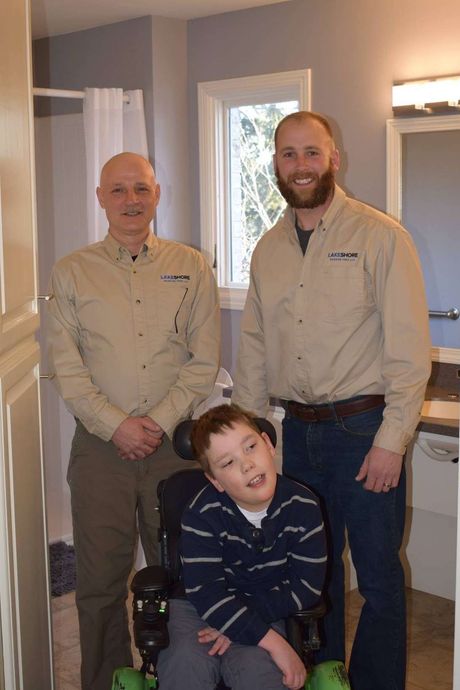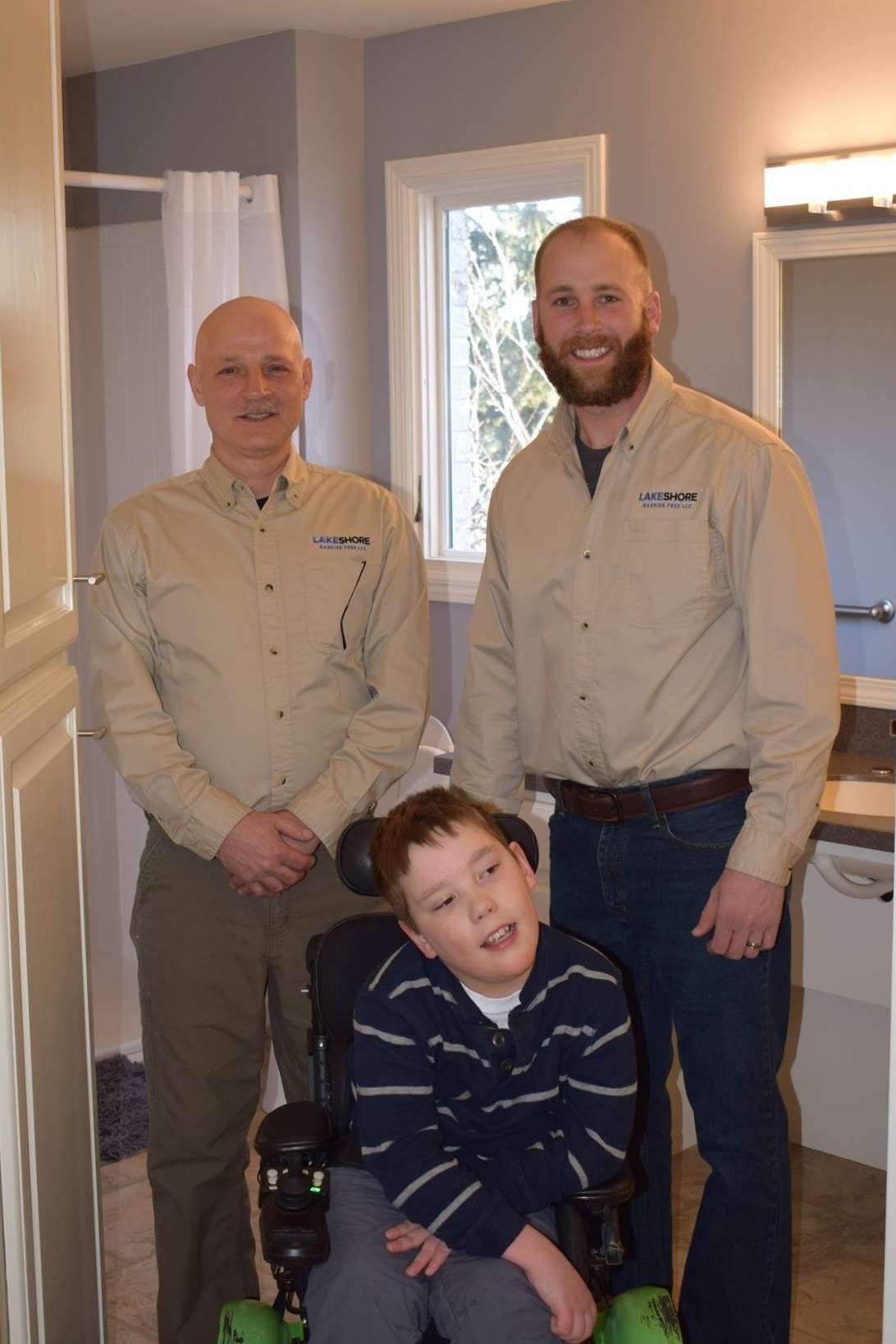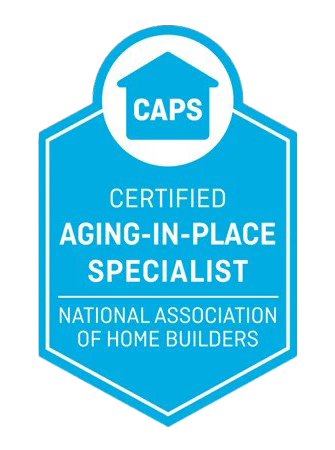Lakeshore Barrier Free is a Certified Aging-in-Place Specialist (CAPS). Aging in place refers to the concept of seniors staying in their own homes or communities as they grow older, rather than relocating to assisted living facilities or nursing homes. It's a significant aspect of elder care that prioritizes independence, comfort, and familiarity. With advancements in healthcare, technology, and home modifications, aging in place has become increasingly feasible, allowing seniors to maintain their quality of life while receiving necessary support and services. It not only promotes emotional well-being by preserving connections to one's community and surroundings but also offers practical benefits like cost savings and continuity of care. Embracing the principle of aging in place empowers older adults to lead fulfilling lives on their terms, surrounded by the people and things they cherish most.
our mission statement
Providing high-quality barrier-free accessibility solutions and services to individuals with disabilities and special needs to improve the lives of our clients by designing, installing, and maintaining accessible environments that promote independence, safety, and inclusivity. Through our expertise in architectural modifications, assistive technology, and comprehensive accessibility assessments, we aim to create barrier-free spaces that comply with relevant regulations and enhance the overall quality of life for individuals with disabilities.
our process
At Lakeshore Barrier Free, we prioritize building strong and long-lasting relationships with our customers. By utilizing JobTread software and maintaining open communication, we enhance transparency, foster efficient project management, and ensure exceptional customer service every step of the way. Our process and procedures are designed to provide a smooth and enjoyable experience, whether working with individuals or collaborating with case managers, occupational therapists, nurses, insurance adjusters, and other professionals.
our core competencies
HOME SAFETY ASSESSMENTS
Comprehensive evaluations are needed to identify potential hazards and recommend modifications for enhanced safety.
BATHROOM ACCESSIBILITY
Installation of grab bars, roll-in showers, walk-in tubs, and other modifications to ensure a safe and accessible bathroom environment.
WHEELCHAIR RAMPS
Construction and installation of sturdy ramps to provide easy access for individuals with mobility challenges.
STAIRLIFTS AND VERTICAL PLATFORM LIFTS
Offering a range of options for vertical mobility, including stairlifts, vertical platform lifts and residential elevators.
ADAPTIVE EQUIPMENT INSTALLATION
Installing specialized equipment, such as patient lifts or ceiling track systems, to assist with mobility and transfers within the home.
DOOR WIDENING AND THRESHOLD REMOVAL
Making doorways wider and removing thresholds to enable smooth and barrier-free entry and exit.
GRAB BAR INSTALLATION
Professionally installing grab bars in various areas of the home to enhance stability and prevent falls.
HOME ACCESSIBILITY REMODELING
Comprehensive remodeling services to create barrier-free environments and accommodate specific needs.
ACCESSIBLE HOME DESIGN
Collaborating with architects and designers to create customized accessible home designs that prioritize safety and independence.
KITCHEN MODIFICATIONS
Adapting kitchens with features such as lowered countertops, accessible cabinets, and appliances to promote independent living.
WHO CAN BENEFIT FROM AGING IN PLACE?
Aging in place can benefit a wide range of individuals, including seniors themselves, their families, and communities. For seniors, aging in place provides the opportunity to maintain independence, dignity, and a sense of control over their lives as they age. It allows them to remain in familiar surroundings, close to friends, family, and the community networks they've built over the years. Additionally, aging in place can lead to better physical and mental health outcomes by reducing the stress and disruption associated with moving to a new environment. Families also benefit from aging in place by knowing their loved ones are comfortable and well-supported, while communities benefit from the continued presence and contributions of older adults, fostering intergenerational connections and a sense of cohesion. Overall, aging in place promotes the well-being and resilience of individuals, families, and communities alike.
IS AGING IN PLACE ONLY FOR THE ELDERLY?
While aging in place is often associated with the elderly, it's not exclusively for this demographic. The principles of aging in place can apply to anyone who desires to remain in their own home or community as they age, regardless of age or ability. For instance, individuals with disabilities or chronic health conditions may also benefit from aging in place by receiving the necessary support and accommodations to maintain their independence and quality of life. Moreover, the concept extends beyond physical age, encompassing factors like lifestyle preferences, cultural background, and personal circumstances. Ultimately, aging in place is about empowering individuals to live comfortably and autonomously in environments that suit their needs and preferences, regardless of their chronological age.
Additional resources and information can be found on the websites:
• National Institute on Aging (www.nia.nih.gov/health/aging-place/aging-place-growing-older-home)
• National Association of Home Builders (www.nahb.org/education-and-events/education/designations/certified-aging-in-place-specialist-caps).






